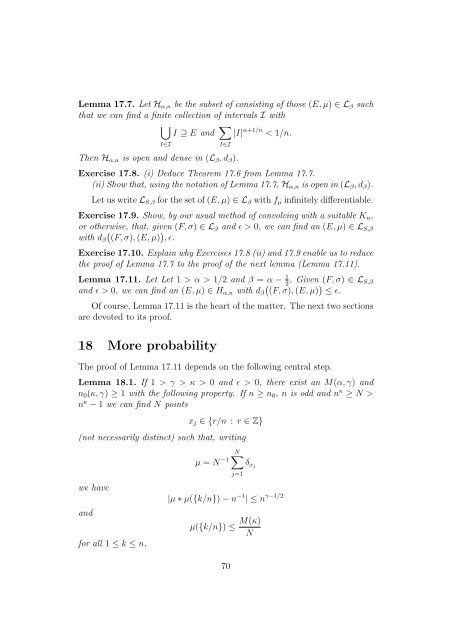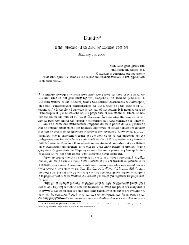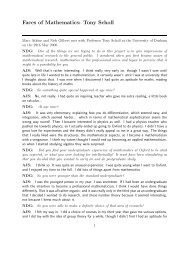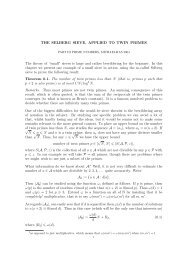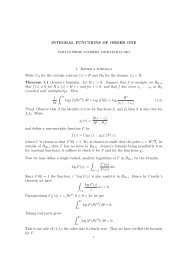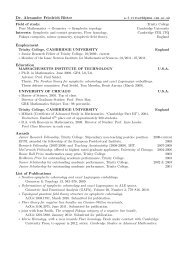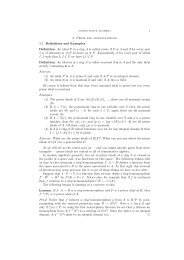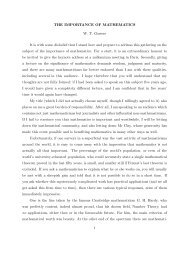Baire Category, Probabilistic Constructions and Convolution Squares
Baire Category, Probabilistic Constructions and Convolution Squares
Baire Category, Probabilistic Constructions and Convolution Squares
Create successful ePaper yourself
Turn your PDF publications into a flip-book with our unique Google optimized e-Paper software.
Lemma 17.7. Let Hα,n be the subset of consisting of those (E,µ) ∈ Lβ such<br />
that we can find a finite collection of intervals I with<br />
<br />
I ⊇ E <strong>and</strong> <br />
|I| α+1/n < 1/n.<br />
I∈I<br />
I∈I<br />
Then Hα,n is open <strong>and</strong> dense in (Lβ,dβ).<br />
Exercise 17.8. (i) Deduce Theorem 17.6 from Lemma 17.7.<br />
(ii) Show that, using the notation of Lemma 17.7, Hα,n is open in (Lβ,dβ).<br />
Let us write LS,β for the set of (E,µ) ∈ Lβ with fµ infinitely differentiable.<br />
Exercise 17.9. Show, by our usual method of convolving with a suitable Kn,<br />
or otherwise, that, given (F,σ) ∈ Lβ <strong>and</strong> ǫ > 0, we can find an (E,µ) ∈ LS,β<br />
<br />
with dβ (F,σ), (E,µ) ,ǫ.<br />
Exercise 17.10. Explain why Exercises 17.8 (ii) <strong>and</strong> 17.9 enable us to reduce<br />
the proof of Lemma 17.7 to the proof of the next lemma (Lemma 17.11).<br />
Lemma 17.11. Let Let 1 > α > 1/2 <strong>and</strong> β = α − 1,<br />
Given (F,σ) ∈ LS,β<br />
2 <br />
<strong>and</strong> ǫ > 0, we can find an (E,µ) ∈ Hα,n with dβ (F,σ), (E,µ) ≤ ǫ.<br />
Of course, Lemma 17.11 is the heart of the matter. The next two sections<br />
are devoted to its proof.<br />
18 More probability<br />
The proof of Lemma 17.11 depends on the following central step.<br />
Lemma 18.1. If 1 > γ > κ > 0 <strong>and</strong> ǫ > 0, there exist an M(α,γ) <strong>and</strong><br />
n0(κ,γ) ≥ 1 with the following property. If n ≥ n0, n is odd <strong>and</strong> n κ ≥ N ><br />
n κ − 1 we can find N points<br />
xj ∈ {r/n : r ∈ Z}<br />
(not necessarily distinct) such that, writing<br />
we have<br />
<strong>and</strong><br />
for all 1 ≤ k ≤ n.<br />
µ = N −1<br />
N<br />
j=1<br />
δxj<br />
|µ ∗ µ({k/n}) − n −1 | ≤ n γ−1/2<br />
µ({k/n}) ≤ M(κ)<br />
N<br />
70


